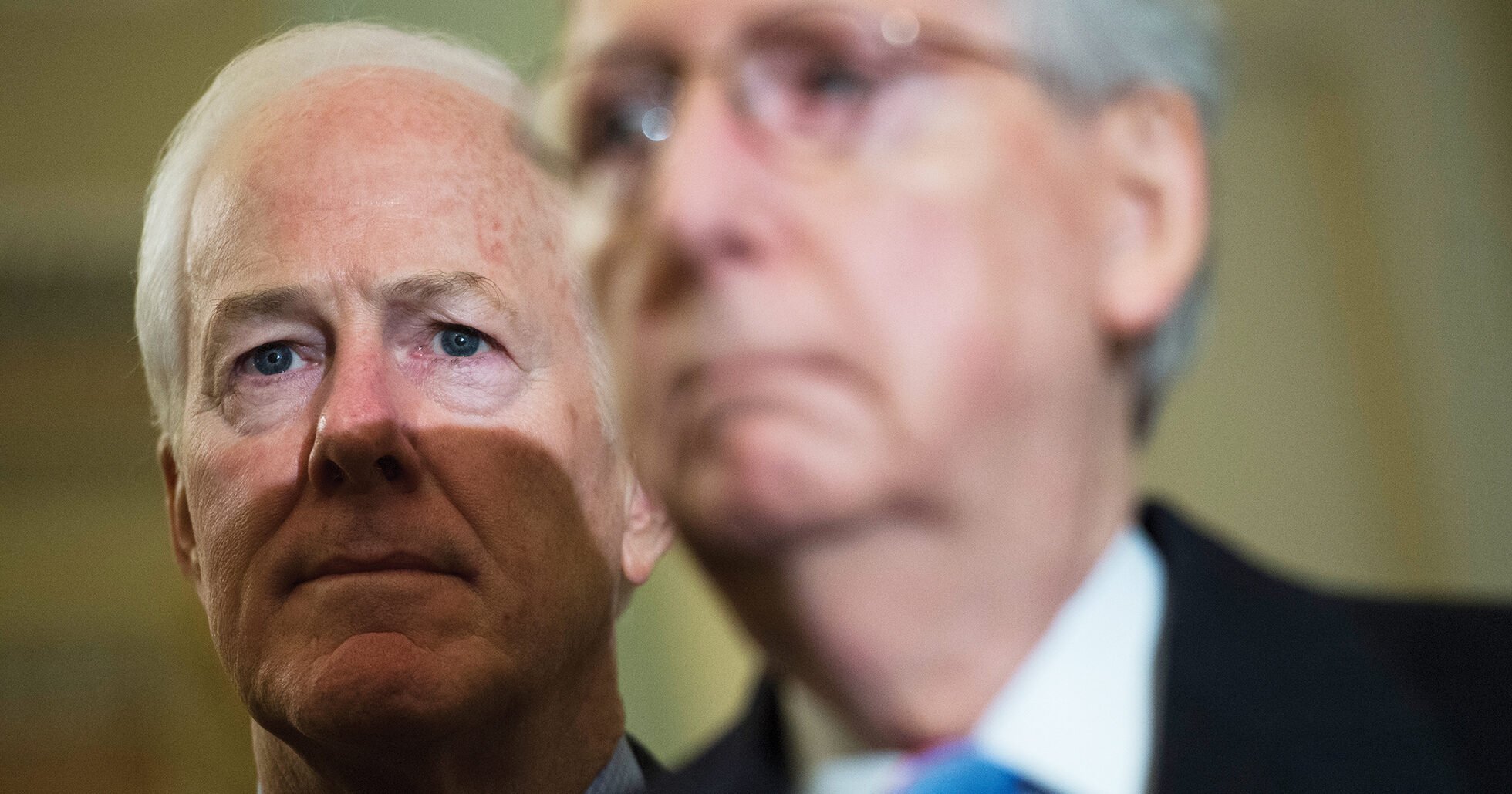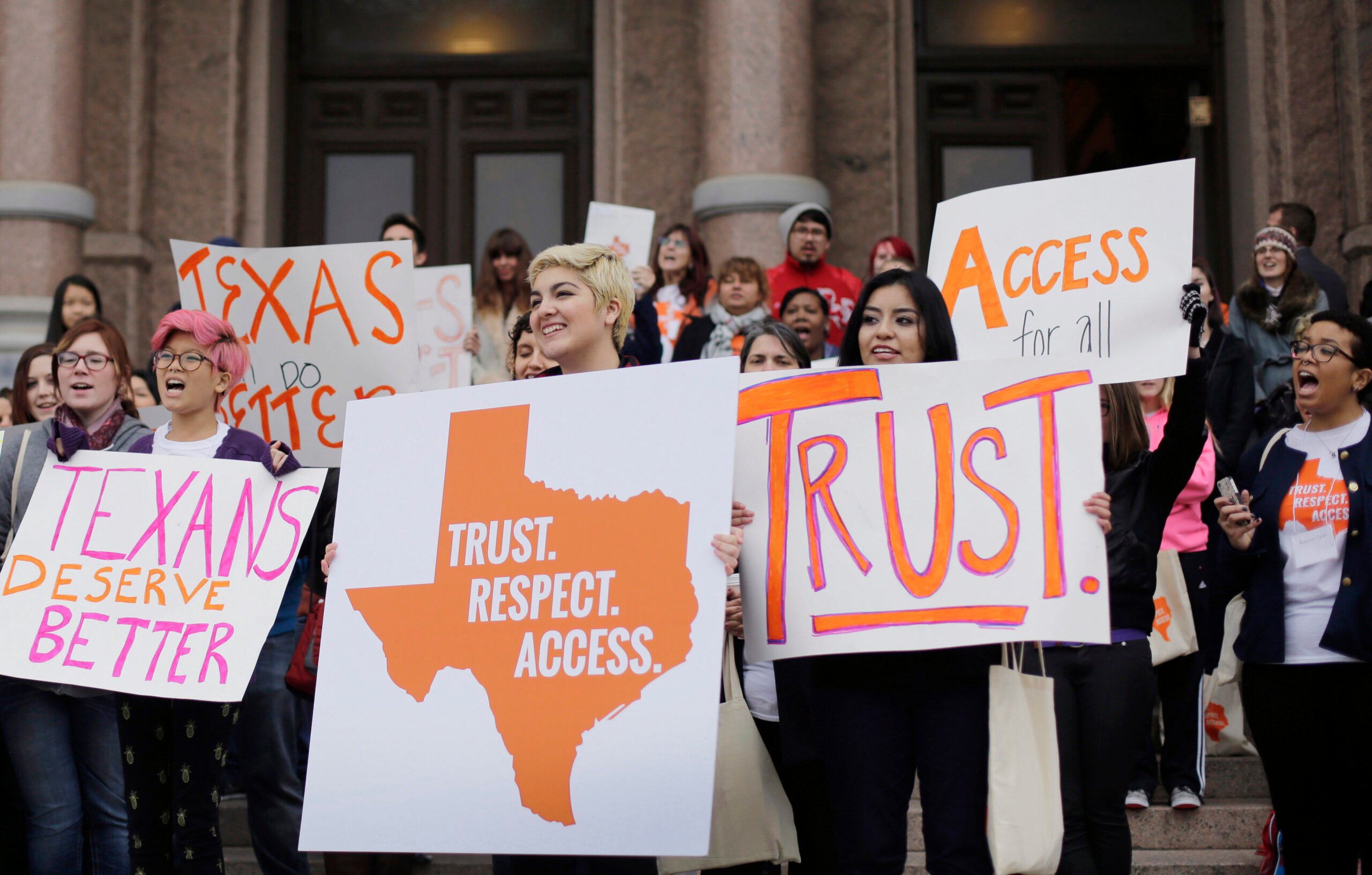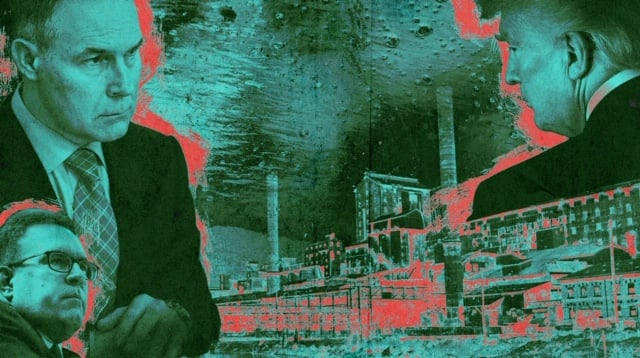
Claiming Major Superfund ‘Success,’ Trump EPA Focused on Completing Cleanups, Not Climate Planning
As work stalled on hardening Superfund sites against climate-related weather extremes, budget cuts continued and a backlog of sites awaiting cleanup ballooned.
This article was published in partnership with InsideClimate News, a nonprofit, independent news outlet that covers climate, energy and the environment, and NBC News.
For the last two years of the Obama administration, Jacob Carter built data models at the Environmental Protection Agency that showed how extreme weather events amplified by climate change threatened hundreds of the nation’s worst toxic waste dumps, known as Superfund sites.
President Barack Obama had made combating climate change the EPA’s No. 1 priority, and Carter was a true believer, working on plans the agency’s regional administrators could use to safeguard those sites.
But when President Donald Trump took office in 2017, everything changed at the EPA. Trump was a climate change denier, and soon the words “climate change” were excised from agency policy. It didn’t take long for the knock on Carter’s door.
A senior official in his office, who could see where the EPA was heading, told him, “You should start looking for a new job,” Carter said.
While Trump rescinded an Obama executive order that made climate change preparedness a national priority, his first EPA administrator, Scott Pruitt, impressed some environmental activists by going after some corporate polluters and saying he intended to put Superfund cleanups “at the center of the agency’s core mission.”
[join]
Pruitt lasted just 18 scandal-marred months and left behind a Superfund program that largely failed to build upon that early promise, according to environmental advocates and former EPA officials. Trump’s EPA dropped climate change planning and proposed cutting the Superfund budget to its lowest level (in 2019 dollars) since the program began in the 1980s.
Pruitt’s successor, Andrew Wheeler, a former coal industry lobbyist, told Congress in February that the EPA had “cleaned up more Superfund sites in the last three years than the Obama administration did in their first term.”
But an investigation by InsideClimate News, the Texas Observer, and NBC News, based on interviews with more than 50 experts inside and outside of government and a review of thousands of pages of EPA records, found that virtually all of those cleanups had begun decades earlier.
The backlog of Superfund sites awaiting funding for cleanup, meanwhile, has now grown to 34, the highest number in 15 years, as Trump has proposed cutting the Superfund budget by $112 million in fiscal year 2021.
Trump’s latest budget proposal also included a 70 percent reduction in EPA spending on environmental justice programs, which aim to support low-income and minority neighborhoods disproportionately affected by environmental problems, from $9.5 million to $2.7 million.
Even though Superfund sites are more likely to be located in communities where most residents aren’t white, one environmental nonprofit reported in late 2019 that 65 percent of the 55 sites the Trump administration had targeted for expedited cleanup were in majority white neighborhoods. Ten of those sites were in communities that were more than 90 percent white, the report from the Center for Health, Environment and Justice found.
EPA spokeswoman Molly Block said that the higher incidence of site cleanups in majority white neighborhoods was unintended and that the sites were selected because “opportunities existed to accelerate the timely resolution of specific issues to move cleanups forward.”
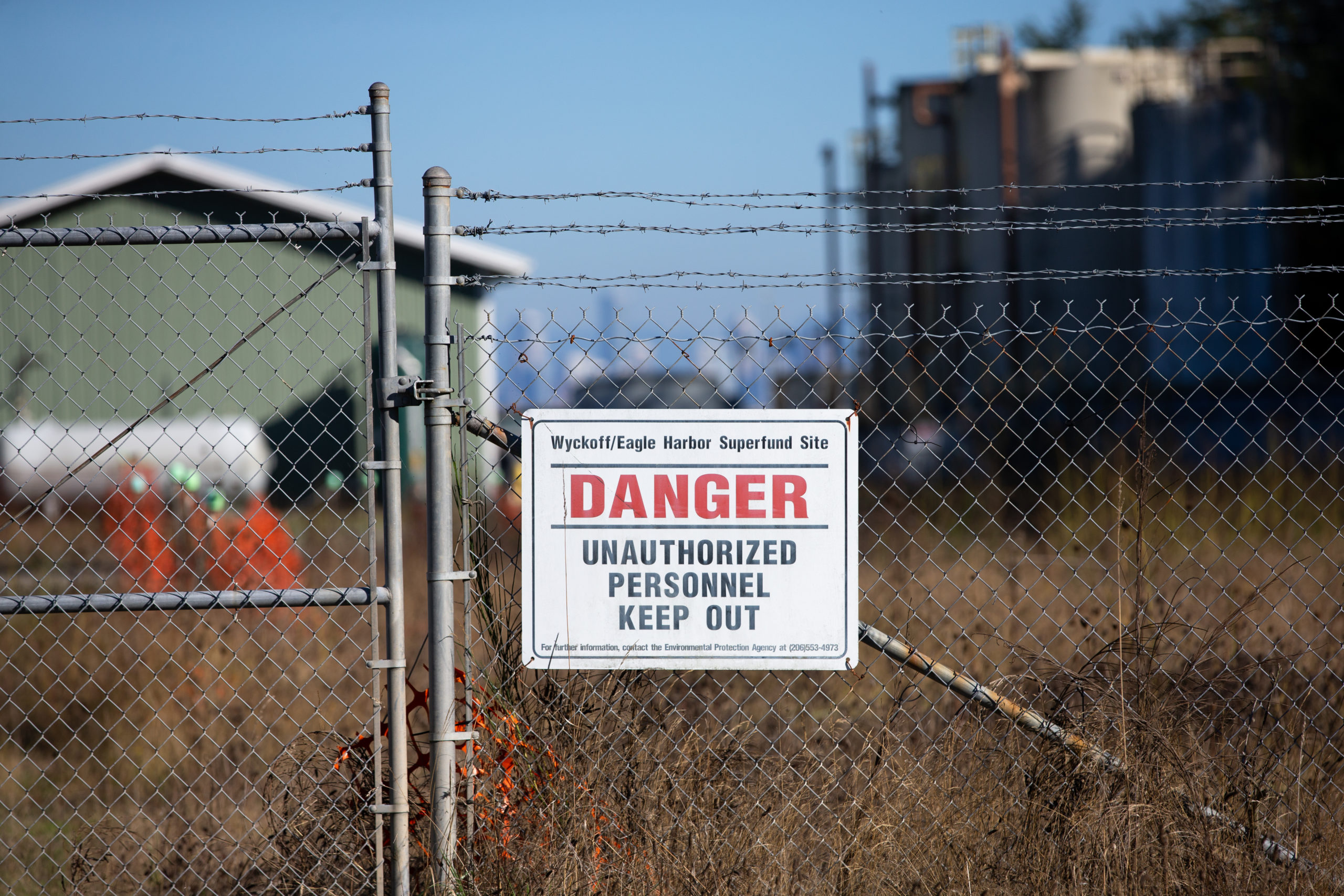
At the same time, the climate threat has continued to grow—while the EPA has halted efforts to address it, former agency officials say. When the Government Accountability Office reported last year that 945 of 1,571 Superfund sites are threatened by climate change, the Trump administration rejected the GAO’s recommendation that the agency should better integrate data on climate-related risks into its mitigation planning at Superfund sites, saying its existing procedures were adequate.
An analysis of federal Superfund data by InsideClimate News, the Texas Observer, and NBC News found that 46 of the 945 sites faced triple threats from climate change because they were in flood plains, regularly flooded in high tide, and were vulnerable to hurricanes.
In its analysis of Superfund sites, the GAO included both active sites and sites that have been remediated, because the remediated sites may still contain contamination and could require additional protective work in the future, the agency said.
In response to questions, Block said that the EPA’s existing procedures “adequately ensure that risks and any effects of severe weather events” are factored into planning and remediation efforts at Superfund sites. James Hewitt, another EPA spokesman, said Carter was in a special, non-civil service position for scientists but did not comment on whether he had been advised to seek employment elsewhere.
The agency declined to make Wheeler or Peter C. Wright, the head of the Superfund program, available for interviews.
After he said he was advised to look for another job shortly after Trump took office, Jacob Carter found one at the Union of Concerned Scientists in Washington, where he wrote his own report on Superfund sites and climate change.
His efforts at the EPA, however, appeared to stall. “Once the new administration came in,” he said, “the work didn’t see the light of day.”
The Obama years: ‘Passion for taking on climate change’
The urgency Carter felt took root in the EPA in 2012 with an agency-wide Climate Change Adaptation Plan. Mike Cox, the EPA’s climate change adviser for the Pacific Northwest region, was, like Carter, all in.
The plan was the greenlight from top administrators to figure out how to protect and clean up Superfund sites in the face of climate-amplified storms, floods, rainfall, and wildfires.
“There was this energy, this passion for taking on climate change,” Cox said.
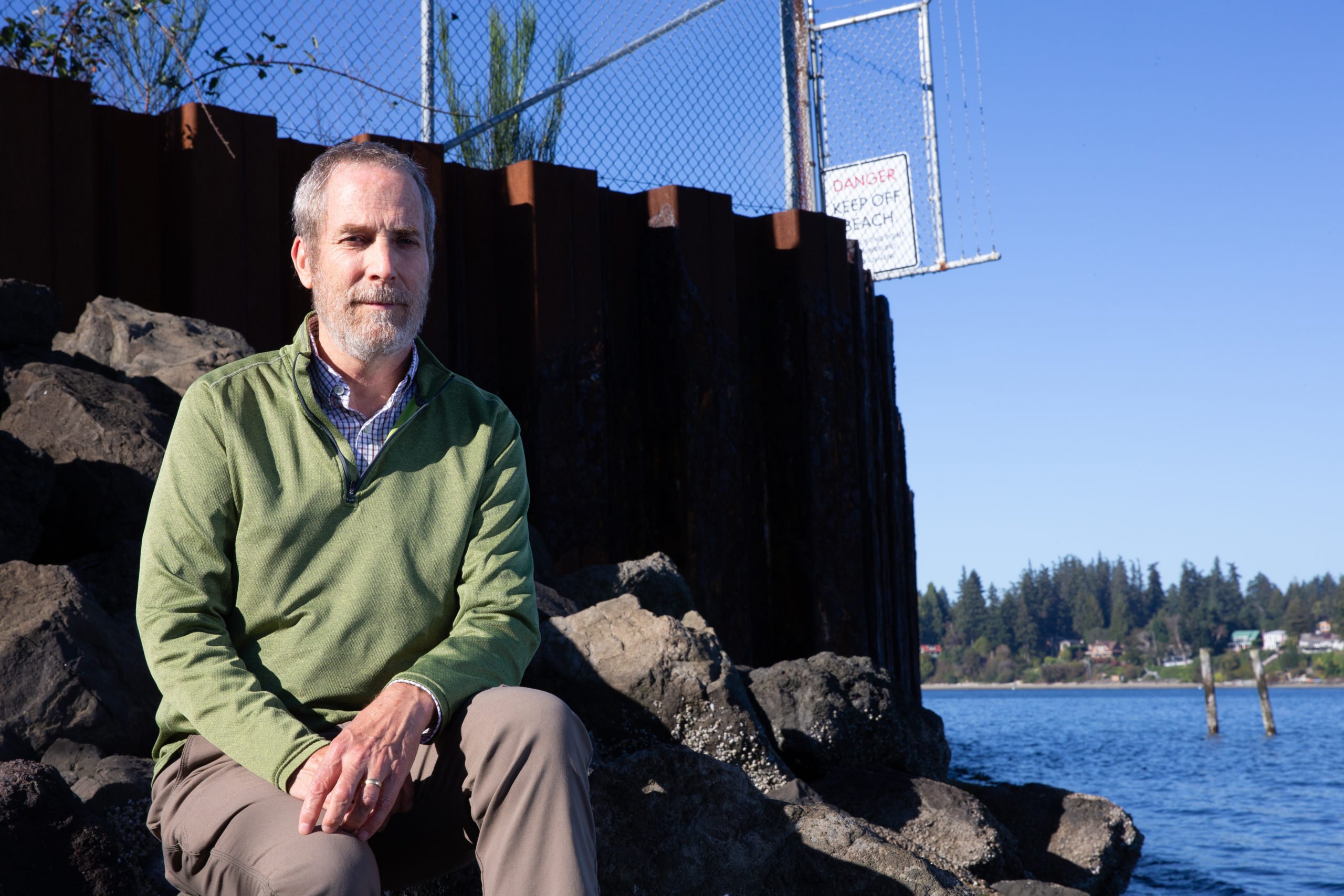
It was up to Cox, who had joined the agency in 1987 as a toxicologist, to devise a strategy that would enable Superfund site managers in his region to put in place protective measures that were cost effective and could withstand climate disasters for decades.
Cox gathered, interpreted, and simplified climate data to help his site managers develop plans.
For the flood-prone Wyckoff-Eagle Harbor Superfund on an island in Washington’s Puget Sound a site fouled by creosote, a toxic chemical used to treat wood that causes severe skin irritation and burning—Cox developed “what if” scenarios for sea level rise and other climate issues, including rain and heat.
Cox also focused on the Lower Duwamish River, a slow-moving muscle of a river that flows through the heart of Seattle’s industrial corridor. The bottom of the Lower Duwamish is contaminated by 50 toxic chemicals released by more than a dozen industries operating along its banks since the early 1900s.
In early 2017, two months after Trump took office, Cox convened a group of more than 50 people representing municipal government agencies, industry groups, the EPA, tribal members, and environmental organizations for a workshop focused on defending the site against climate change threats.
A month later, Cox was gone. He resigned in disgust over the Trump administration’s redirection of the EPA under Pruitt, blasting the president in a 2017 resignation letter for denying climate science.
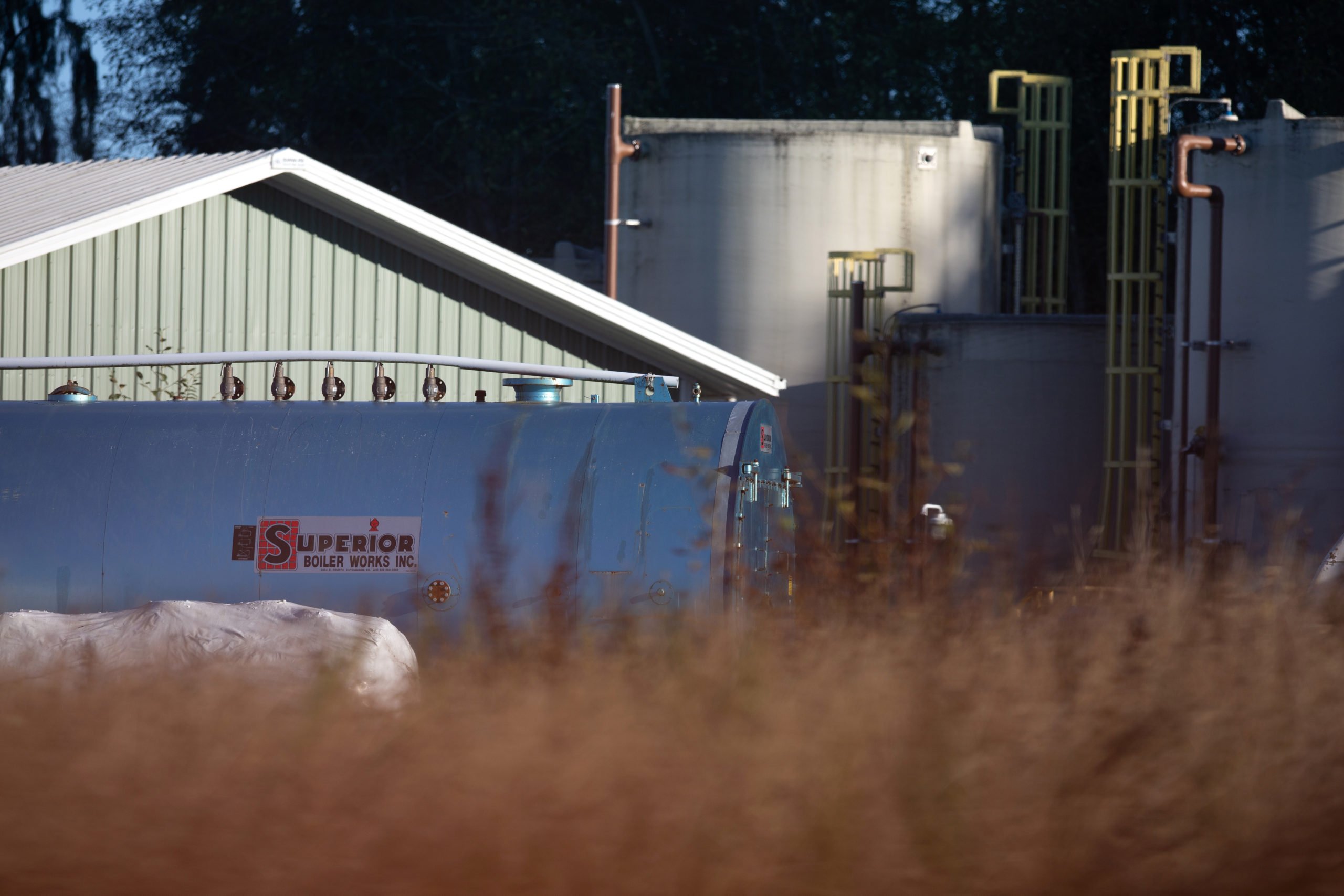
The EPA did not make the project managers for either the Duwamish or Wyckoff sites available for interviews.
Heather Trim, a member of the board of directors of the Duwamish River Cleanup Coalition and a workshop participant, said the issue of climate change has become dormant since 2017.
“There hasn’t been anybody talking about climate change the way Mike did,” she said.
Scott Pruitt vowed to make Superfund a top EPA priority
Eager to make progress cleaning up Superfund sites, Pruitt brought in a banker friend from Oklahoma, Albert Kelly, to run the program in 2017.
Kelly established a Superfund Task Force and created a sense of momentum by focusing on sites where corporations could be identified as “potentially responsible parties” and held liable for remediation costs.
He and Pruitt concentrated on removing sites from the National Priorities List, the index of contaminated dumps and factory sites that had been designated for monitoring and cleanup under the Superfund program.
Lois Gibbs, an activist who is often called the mother of the Superfund program for her advocacy at the polluted Love Canal site in New York in 1980, was initially impressed.
She credited Pruitt and Kelly for actively going after corporate polluters, holding regular meetings with representatives of community groups at EPA headquarters in Washington, and visiting Superfund sites around the country.
Pruitt flew to Houston after Hurricane Harvey in September 2017 and visited the notorious San Jacinto Waste Pits Superfund site after EPA divers confirmed that cancer-causing dioxin had leaked into the river during the storm.
Pruitt announced that dioxin in the pits, which had supposedly been secured by a concrete cap, would finally be removed. A month later, the EPA approved a plan, estimated at $155 million, to remove about 212,000 cubic yards of dioxin-contaminated waste.
But to activists like Gibbs, the site has become emblematic of Pruitt’s failed early promise: Three years after Hurricane Harvey, the cleanup he accelerated has yet to begin, according to Superfund documents on the EPA website.
“They were going after the sites where the [potentially responsible parties] had deep pockets—not the sites that were necessarily posing the biggest risks to human health or the environment or that were subject to climate change.”
A design plan put forth by International Paper and the other responsible parties in August would stretch out the removal for seven years after its start date—meaning the process could be complete no sooner than 2028.
Tom Ryan, a spokesman for International Paper, said the company is committed to protecting public health and the environment and would work with EPA and other “stakeholders” throughout the cleanup process.
Pruitt resigned in July 2018 amid 11 federal investigations into an array of alleged ethical improprieties. At least two were dropped by the EPA inspector general after Pruitt left the agency, and no findings have been announced in the others.
Kelly had preceded his friend and boss out the door, leaving the EPA in May 2018 after press accounts revealed that the Federal Deposit Insurance Corporation had banned him from banking for life because of loan irregularities in Oklahoma.
Neither responded to requests for comment, and both have denied any wrongdoing as EPA officials.
Despite the focus on aggressive cleanups, the targeted sites typically weren’t the ones most subject to climate change, records show. Of the 46 sites that faced triple threats, only three have been included on Trump administration priority lists.
“They were going after the sites where the [potentially responsible parties] had deep pockets—not the sites that were necessarily posing the biggest risks to human health or the environment or that were subject to climate change,” Gibbs said.
Corporate lawyers replace the Oklahomans
A month after Pruitt’s resignation, Andrew Wheeler, Trump’s new pick to run the EPA, touted “the extraordinary progress we’ve made cleaning up sites” in testimony before the Senate Environment and Public Works Committee.
The stylistic difference between Pruitt, the flamboyant former Oklahoma attorney general, and Wheeler, a buttoned-down Washington insider and lawyer-lobbyist who had long represented coal magnate Robert Murray, was immediately apparent.
Pruitt liked to work the room and often shook hands with Superfund community group leaders. In his first meeting with those community leaders in September 2018, Wheeler arrived with an entourage of bureaucrats and sat down at the table without personally greeting anyone, according to Jackie Young, a native of Highlands, Texas, and a longtime representative of a group that advocates for removal of the dioxin-laden waste from the San Jacinto Waste Pits.
Young knew that Wheeler had recused himself from involvement in the San Jacinto cleanup because of his past association with International Paper, one of the companies involved in the cleanup. So she advised senior EPA officials, in advance, that she would only speak generally on how the EPA could work effectively with community groups.
But when Wheeler realized Young, the first speaker in the meeting, was connected to the San Jacinto site, he got up and left, saying it seemed like a “good time for me to go,” she and two other attendees later said. Wheeler did not return to hear others who’d come from across the country to discuss other Superfund cleanups, the attendees said.
Wheeler dropped by the meeting to introduce himself and to sit in on some of the discussions regarding a number of Superfund sites, EPA spokeswoman Block said.
“When the San Jacinto Pits Superfund site came up, the administrator left the room due to his recusal,” she said.
Wheeler’s two-year period for recusal from any matter in which he was previously involved in his prior capacity outside the EPA began in April 2018 when he became deputy EPA administrator and ended on April 20, 2020, Block said.
“Simply put, Peter Wright made his mark at Dow Chemical by misrepresenting science, downplaying threats to public health, and undermining cleanups.”
Ten months after that 2018 meeting, Wheeler was joined on the EPA’s senior leadership team by Peter C. Wright, a lawyer who previously worked for Dow and represented the company in negotiations with the EPA over Superfund sites.
Sen. John Barrasso, R-Wyoming, praised Wright as someone who “will bring a wealth of experience and expertise to critically important roles in protecting America’s public health and safety.”
But Senator Jeff Merkley, D-Oregon, called his nomination “the classic fox guarding the henhouse,” given Wright’s past work for Dow on Superfund sites.
Senate Democrats argued that Wright’s handling of Dow’s interactions with EPA regulators at a Dow Superfund site in Midland, Michigan, near the company’s corporate headquarters, should disqualify him from running the program.
“Simply put, Peter Wright made his mark at Dow Chemical by misrepresenting science, downplaying threats to public health, and undermining cleanups,” Senator Bob Menendez, D-New Jersey, said during the confirmation hearing. “These practices run counter to the very mission of the EPA.”
After Wright became Superfund chief, his prior work at Dow disqualified him from involvement in 160 Superfund sites, given how often Dow or DuPont—the companies merged in 2017—have been identified as “responsible parties” for toxic pollution.
As a result of his recusals, Wright is barred from involvement at 33 Superfund sites identified by the GAO as vulnerable to climate change, including low-lying locations in highly populated metropolitan areas in Texas and New Jersey that have repeatedly been struck by hurricanes.
His recusals include three toxic waste dumps on the GAO climate change list where the EPA itself says uncontrolled toxins potentially threaten human health. One is the Diamond Alkali Co. site, a huge Agent Orange factory that dumped cancer-causing waste into the Passaic River in downtown Newark, New Jersey.
Nor can Wright participate in review of the French Limited site on the banks of the San Jacinto River next to the historically Black town of Barrett, Texas, outside Houston, where residents remain concerned about toxins being carried into their community by flooding. In a letter to Wheeler in July, Wright said his recusal from involvement in all matters related to Superfund sites in which Dow or DuPont were responsible parties would last “for the duration of my EPA tenure.”
A backlog of Superfund cleanups
In House testimony in February, Wheeler noted that 27 Superfund sites had been deleted from the National Priorities List in fiscal year 2019 after remediation plans had been completed, the most in any year since 2001. “We have speeded up cleanup at all the sites,” Wheeler said. Deleting sites from the list had become the agency’s leading metric for success, Wheeler had previously said.
In virtually all of the removal cases, the start of those cleanup plans predated the Trump administration by decades, and many of those deleted sites are still under five-year review by the EPA because toxins remain present, often buried beneath sand, soil, and concrete caps that have proven vulnerable to heightened flooding linked to climate change.
Representative Frank Pallone, D-New Jersey, grilled Wheeler at the hearing about why the Trump administration was proposing a $112 million cut in the Superfund program when there are 34 unfunded cleanup projects, the largest backlog in 15 years.
Congress, which last month passed a stopgap resolution funding the government through December 11, has previously rejected Trump’s annual proposed EPA cuts and continued agency funding at around current levels.
“The Superfund program has always been a challenge. The demands have always exceeded the budget. But cutting the budget would further stress the program and the agency’s ability to address these serious environmental and public health threats.”
At the February hearing, Pallone also asked Wheeler whether it was true that the Trump administration opposed legislation Pallone had introduced to incentivize climate protections at Superfund sites.
Wheeler replied that the administration did oppose that legislation, but he added: “When we work on the Superfund sites, we work to make sure that we can withstand stronger storms, and we have a very good track record there.”
David Coursen, a former EPA attorney who now works with the Environmental Protection Network, a group of former EPA employees, disagreed.
He said in an interview that Superfund site cleanups could stall, while others sit unattended, as a consequence of reduced funding, increasing the danger to communities from pollutants leaking into the water and air.
“The Superfund program has always been a challenge,” he said. “The demands have always exceeded the budget. But cutting the budget would further stress the program and the agency’s ability to address these serious environmental and public health threats.”
Administration officials say the cuts would force the agency to become more efficient and could lead to more expedient remediation of the most heavily polluted sites.
Gibbs, the original Love Canal activist who said she was initially surprised and pleased by Pruitt and Kelly’s work, had lost much of her enthusiasm by late 2019.
Her nonprofit, the Center for Health, Environment and Justice, released a study in October 2019 that showed how the Trump administration’s Superfund cleanups had predominantly been in majority white neighborhoods.
By focusing on sites where corporate polluters could be readily identified and forced to pay for cleanups, she said, the Trump administration had ignored “orphan sites” where no such “potentially responsible parties” could be identified, which tend to be in communities of color. Orphan sites represented just five of the 55 sites targeted by the Trump administration for cleanup.
The lasting loss of long-term climate change planning
Over time, the Trump administration’s decision to largely abandon Obama’s mandate for creating climate change adaptation plans for every Superfund site may have the most lasting impact, environmental advocates and former EPA officials said.
Dennis McLerran, who served as EPA regional administrator in the Pacific Northwest from 2010 to 2017, said he worries that by excluding climate change calculations, Superfund site remediation decisions will be made based on historical data that does not provide an accurate picture of the future, even present, threats posed by increasing rainfall, larger flood zones, and more intense hurricanes.
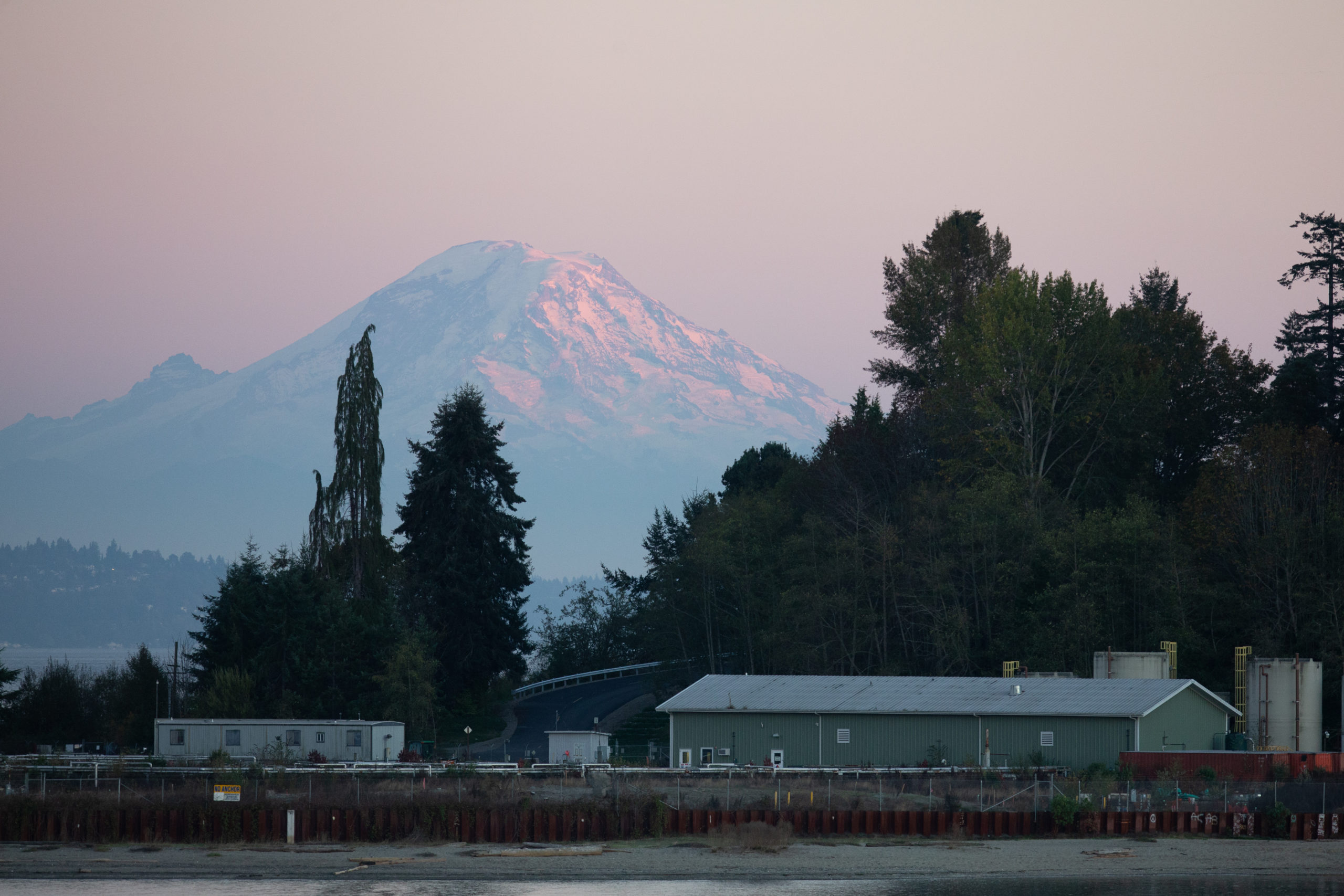
“It’s only prudent that you look to the future to make calculations to harden these sites against climate change,” McLerran said. “Not taking climate change into account is putting your head in the sand.”
After Jacob Carter left the EPA and joined the Union of Concerned Scientists, he helped produce a study on Superfund sites and climate change in July that went beyond the findings of the Government Accountability Office.
The study concludes that more than 800 sites near the Atlantic and Gulf coasts are at risk of flooding in the next 20 years under scenarios predicting low rates of sea level rise. That number jumps to more than 1,000 by 2100 if carbon emissions continue on their current trajectory and trigger a high rate of sea level rise.
“For purely political reasons, the agency sidelined work that was vital to its mission,” Carter said. “Scientists should be able to carry out this work without fear of political pressure.”
In May, after two days of heavy rain, floodwaters breached two dams in Midland County, Michigan, and reached the outer boundaries of a Dow Chemical Superfund site on the Tittabawassee River, providing a powerful reminder of the threat to Superfund sites posed by climate change.
It was the very site that Wright, the EPA Superfund chief, had overseen for more than a decade when he worked at Dow. The company’s Superfund agreement with the EPA required that Dow check for any recontamination after the flooding.
The EPA is monitoring the situation after Michigan environmental officials reported minor contamination, and the EPA will be involved in any future cleanups. But Wright, having recused himself from involvement in all of Dow’s many sites, cannot take part.
Read more from the Observer:
-
Trump’s Favorite Texas Sheriff Faces Re-Election Amid a Spike in Deaths at His Jail: Conservative media have turned Tarrant County Sheriff Bill Waybourn into a right-wing celebrity despite a long list of scandals on his watch.
-
The Work is All of Us: Undocumented and disabled, the members of the Living Hope Wheelchair Association offer a vision for a more caring future.
-
Democrats Seek to Undo San Antonio Senate Slip-up: Or, Roland’s Revenge.
